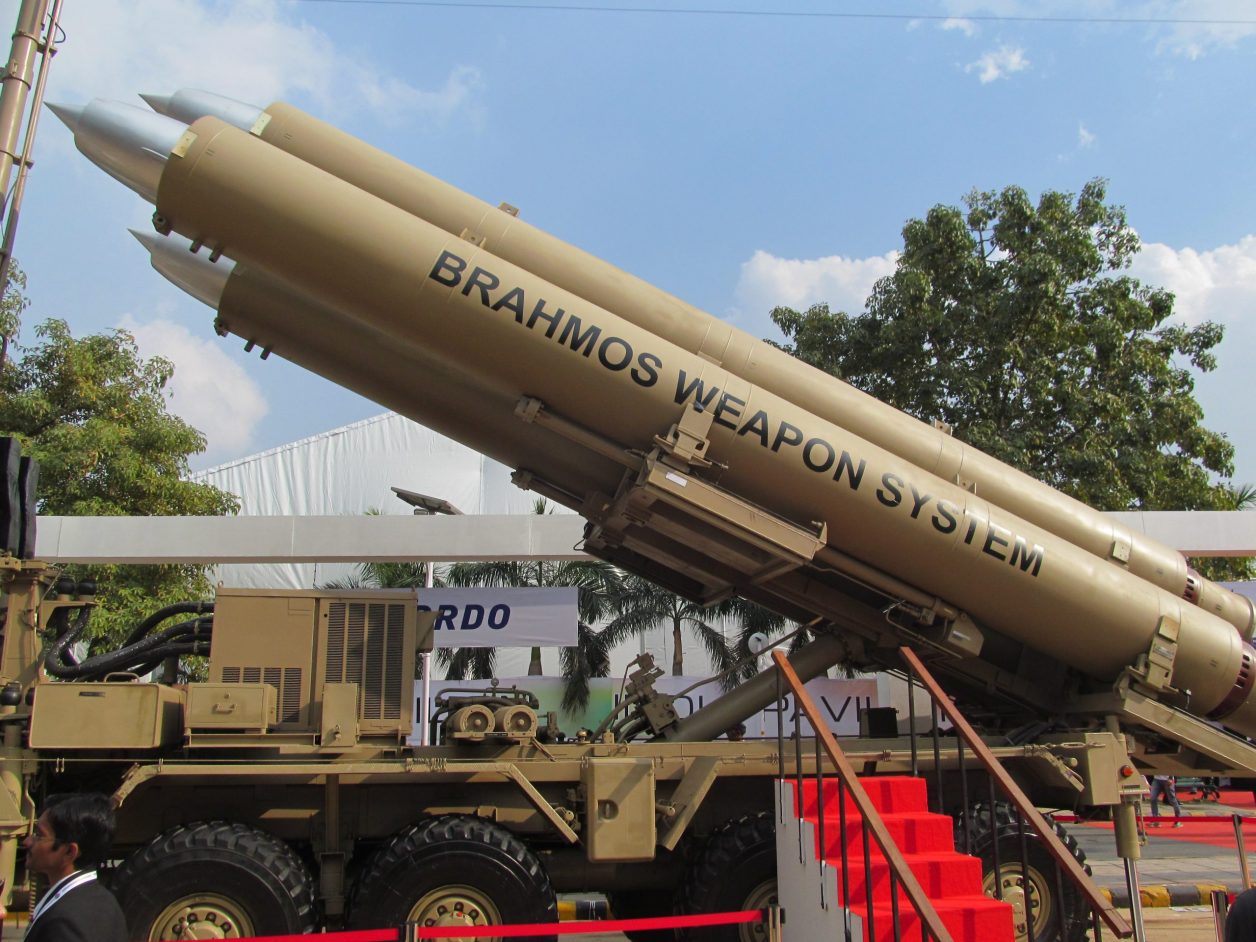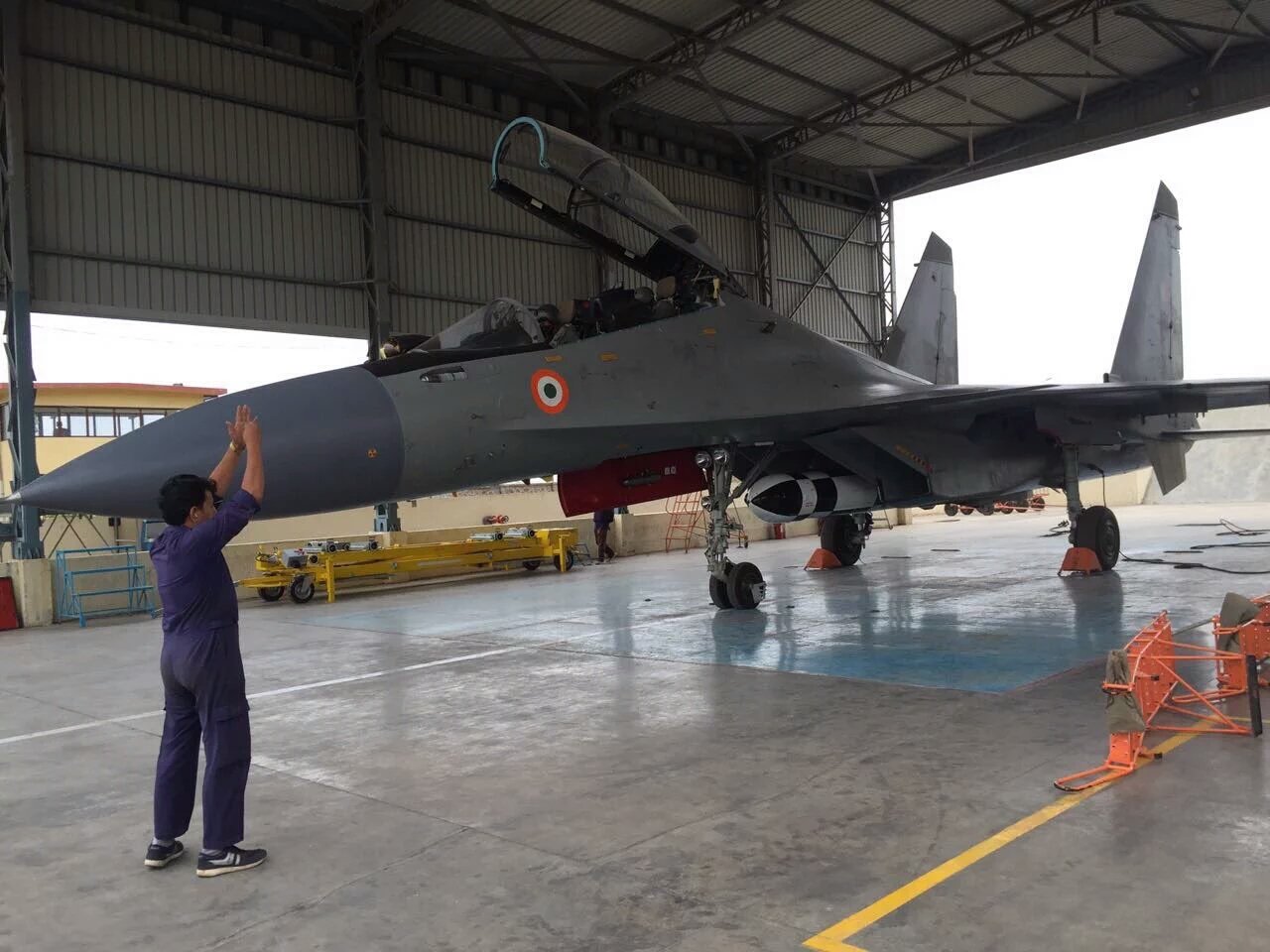The revered Indo-Russian BrahMos missile managed to hog headlines with a series of exciting and successful tests this week. On Tuesday, two of BrahMos supersonic cruise missile variants successfully displayed their firepower in tests conducted by the Indian Navy and the Indian Air Force.
Chinese Warships, Fighter Jets Heading To Australia’s Backyard ‘In Weeks’ As Beijing Flexes Its Muscles In Southern Pacific — Reports
The Indian Air Force (IAF) successfully test-fired a BrahMos supersonic cruise missile from a Russian-origin Sukhoi Su-30MKI fighter jet on the Eastern seaboard, demonstrating its operational readiness.
The “live fire” of the missile was done in close cooperation with the Indian Navy, informed the Indian Air Force in a statement. The missile achieved a direct hit on the target, a decommissioned Indian Navy ship with pinpoint accuracy and precision, the IAF stated.
In 2017, the IAF completed the maiden test of the BrahMos air-launched cruise missile, which represents a substantial addition to the IAF’s operational capabilities from stand-off ranges. These missiles are launched from a sufficient distance away from the target area to allow the attacking party to avert any potential defensive fire.
In another instance, the guided-missile destroyer INS Delhi successfully test-launched a BrahMos supersonic cruise missile. The vessel made use of an updated modular launcher to test the missile’s anti-ship variant.
Pentagon’s Top Boss ‘Mighty Impressed’ As Elon Musk’s SpaceX Thwarts Russian Attempts To Hack Its Starlink Satellites
“Successful maiden BrahMos firing by INS Delhi from an upgraded modular launcher once again demonstrated long-range strike capability of BrahMos along with validation of integrated Network Centric Operations from frontline platforms,” the Navy said in a statement.
A BrahMos supersonic cruise missile was testfired by the Indian Navy warship INS Delhi on Apr 19. The missile without warhead created a hole in the abandoned ship. The missile travels at speeds around 3000 kmph & is difficult to intercept by air defence systems: BrahMos officials pic.twitter.com/65J6uUirFE
— ANI (@ANI) April 20, 2022
Earlier, the Indian Navy had successfully test-fired a modified version of the BrahMos supersonic cruise missile in the Indian Ocean on March 5 from the stealth destroyer INS Chennai.
The Navy began using BrahMos on its frontline warships in 2005. The missile can hit targets at sea that are beyond the radar horizon. The naval variant has shown to be successful in both sea-to-sea as well as sea-to-land missions.
Beijing Releases Video Of Chinese Navy’s Full-Scale Strikes On ‘Disputed Islands’ As It Learns From ‘Russian Misadventure’
Even though the BrahMos triad has been tested on several occasions, it is pertinent to wonder if the missile that is developed by a joint venture between India and Russia is actually a ‘game changer’ in the region?
BrahMos Missile – A Game Changer?
BrahMos missiles are designed, developed, and manufactured by BrahMos Aerospace, a joint venture corporation established by India’s Defence Research and Development Organisation (DRDO) and Russia’s Mashinostroyenia.
About two decades ago in 2001, the original version of BrahMos was tested for the first time. Since then, other variants of the BrahMos have been designed, tested, and inducted, including ones that can be fired from land, warships, submarines, and Sukhoi-30 fighter planes.

The BrahMos is one of the world’s few cruise missiles capable of flying at high supersonic speeds. The speed makes it incredibly difficult to engage or avoid the BrahMos missile. Moreover, the missile’s tremendous speed makes it significantly more deadly than subsonic cruise missiles.
According to Squadron Leader Vijainder Thakur (retd), “More than the BrahMos-A (air-launched variant), it is the combination of Su-30MKI and BrahMos-A which give the IAF the unique ability to hit very far and very hard, an ability that not just our adversaries lack, but even our friends, including Russia, lack!
In a flight test conducted in October 2020, an IAF Su-30MKI took off from the Halwara airbase in Punjab around 9 am and hit it target ship in the Bay of Bengal around 1.30 pm after mid-air refueling! Being one of the heaviest fighters in the world, the Su-30MKI has the range and payload capability to carry BrahMos-A. Besides modified Su-30MKI, no other fighter in the world can carry Brahmos-A. This is what it makes this missile a game-changer.”
F-16 Vipers For US Navy – With ‘Aim To Tame’ Chinese, Russian Fighter Jets, US Navy Adds USAF’s F-16Vs To Its Arsenal
The 8.4-meter BrahMos can deliver a conventional payload weighing up to 300 kilograms and has a range of over 400 kilometers (up from 290 kilometers following India’s entry into the Missile Technology Control Regime).
Owing to its excellent precision and destructive power, it can cruise at Mach 2.8 supersonic speeds i.e. almost three times the speed of sound.

BrahMos Aerospace had to reduce the weight of the air version to 2.5 tons because it will be fired from a moving platform, unlike the land and navy versions. The land and naval versions of the missile each weigh 2.9 tons. Its design has also been altered to make it easier to integrate into the Sukhoi Su-30MKI.
“The most lethal variant of the BrahMos is the naval variant, fired by stealth destroyers and submarines due to their ability to evade radars. However, an air variant would allow the reaction time to be significantly reduced in case of a conflict.
The heavy-duty fighter jet, carrying a missile in its belly could quickly spring into action and deliver a blow – that’s the main utility of stand-off weapons. When the Sukhoi Su-30MKI was being manufactured for India with necessary modifications, the need to accommodate a heavy missile like the BrahMos was taken into account.
The fighter jet could take off, drop weapons at very long distances and come back to base. This is how it could be a game-changer for the Indian Air Force”, Air Marshal P.K Barbora (retd) told The EurAsian Times.
BrahMos – Enhancing Indian Fire-Power?
From a ship, the BrahMos can be launched as a single unit or in a salvo of up to eight, with 2.5-second intervals between them. These salvos are capable of hitting and destroying a group of targets equipped with current missile defense systems.

The ships’ ability to engage naval surface targets at long ranges is greatly enhanced by the use of BrahMos as a “primary strike weapon.”
Early into the year 2022, the Indian Navy’s newly commissioned INS Visakhapatnam had successfully test-fired an extended range sea-to-sea variant of the BrahMos supersonic cruise missile.
The Navy’s indigenously-built stealth destroyer INS Chennai and Rajput-class destroyer INS Ranvijay first tested the naval variant in October and December 2020, respectively.
Advanced sea to sea variant of BrahMos Supersonic Cruise missile was tested from INS Visakhapatnam today. Missile hit the designated target ship precisely. @indiannavy @BrahMosMissile#SashaktBharat#AtmaNirbharBharat pic.twitter.com/BbnazlRoM4
— DRDO (@DRDO_India) January 11, 2022
This version of the missile is designed to fire from moving/stationary assets in either a vertical or horizontal mode, targeting both land and water targets. However, there are always some lethal risks associated with lethal firepower.
Vice Admiral Shekhar Sinha told The EurAsian Times that the potential risk associated with firing a BrahMos at a sea target, “As you know naval ships are deployed all across the oceans of Indian interest and therefore Brahmos is available for launch 24×7.
The added advantage is that the Navy has on-line MARITIME Domain Awareness which is essential for target identification. Also, P8I is on task nearly round the clock therefore target can be pinpointed.

At 300 kilometers range, it is mandatory to identify the target before launching the Brahmos otherwise there is a risk of firing at ships in innocent passage. At sea 90% of ships are commercial and have the right to innocent passage. This identification advantage is available to naval warships.”
“Targets over land can be engaged if they are on the other side of LAC or LOAC, therefore the question of shooting the wrong target does not arise. It is not so at sea where there is no Line of Control and in the vast ocean locating the right target is challenging. And, knowing the target position accurately is essential for firing a missile. Warfare at sea is a complex ballgame.”
Having said that, wielding a triad of BrahMos missiles that could be launched from land, air and sea provide advanced firepower to the Indian military. With a Chinese expansion in the Indian Ocean region inevitable now, these missiles would help create deterrence with Beijing as well as Islamabad.
- Contact the author at sakshi.tiwari9555@gmail.com
- Follow EurAsian Times on Google News





